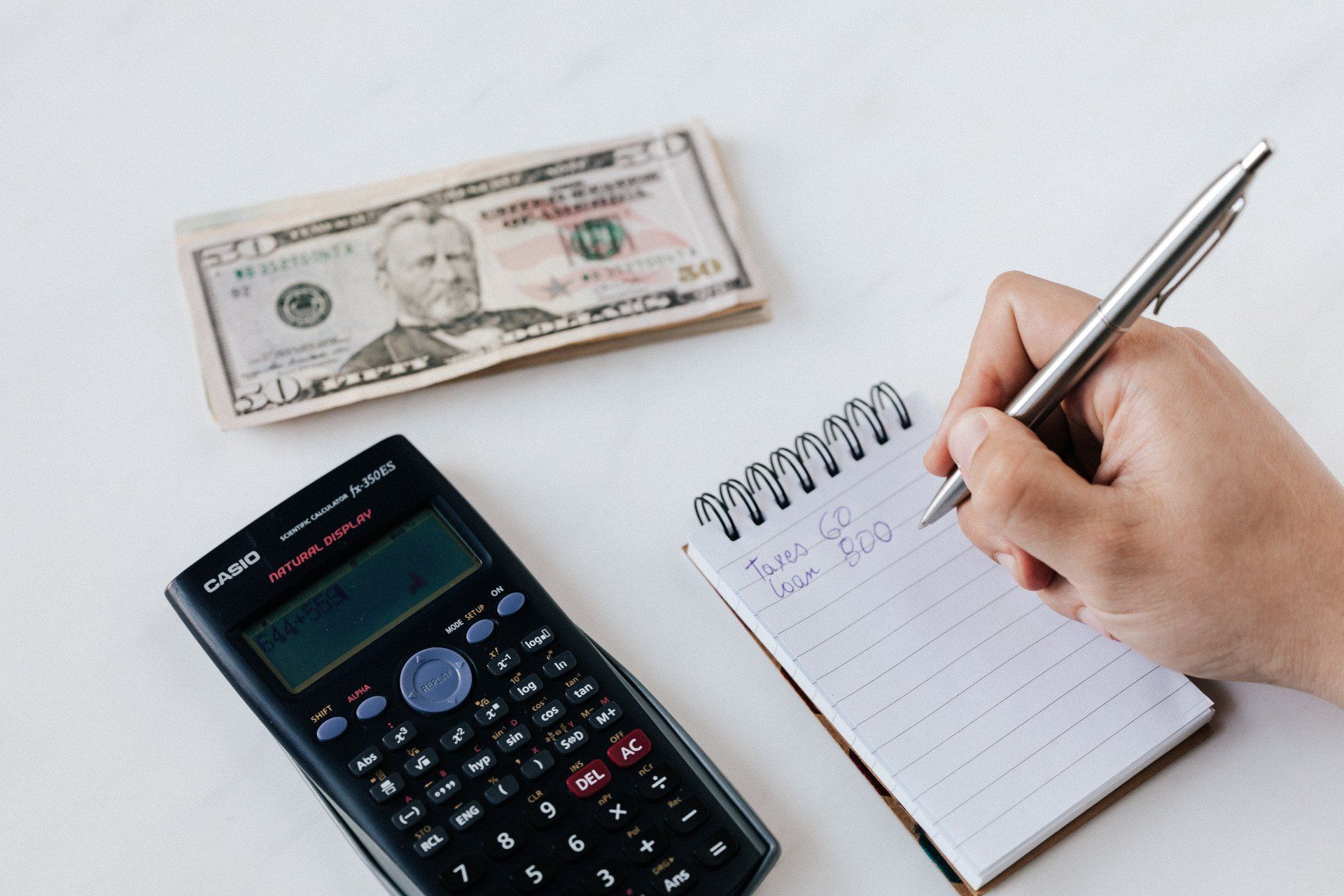Setting a Budget to Buy Your First Home
Budgeting for Your First Home
Determining How Much Home You Can Afford
A commonly used guideline is that the cost of your home should not exceed three times your gross annual income. For instance, if your annual income is $80,000, aim for a home priced at $240,000 or less. This rule helps ensure that your mortgage payments remain manageable within your overall financial picture.
Loan-to-Value Ratio (LTV)
Your Loan-to-Value ratio (LTV) is a crucial factor in the home-buying process. The LTV is the loan amount divided by the home's purchase price. For example, if you're buying a $300,000 home and have a $30,000 down payment, your LTV would be 90%. Ideally, you should aim for an LTV of 80% or lower to avoid private mortgage insurance (PMI) and secure better loan terms.
Down Payment and Closing Costs
While the down payment is a significant expense, it is not the only cost involved in purchasing a home. Closing costs, including origination fees, appraisal fees, and other miscellaneous charges, can add up to 2-5% of the home’s purchase price. Make sure to budget for these additional expenses to avoid any surprises at closing.
Assessing Your Financial Health
Before diving into the home-buying process, it’s essential to take a close look at your overall financial health. This includes evaluating your income, expenses, debts, and savings. Understanding your financial situation will help you determine how much you can afford to spend on a home and ensure that you can comfortably manage your mortgage payments alongside your other financial obligations.
Debt-to-Income Ratio (DTI)
Lenders use your Debt-to-Income ratio (DTI) to assess your ability to manage monthly payments and repay debts. Your DTI is calculated by dividing your recurring monthly debts by your gross monthly income. Lenders generally prefer a DTI of 43% or lower. For example, if your gross monthly income is $5,000 and your monthly debt payments total $1,500, your DTI would be 30%.
Monthly Discretionary Income
To determine how much you can comfortably afford for a mortgage, calculate your Monthly Discretionary Income. This is done by subtracting your necessary monthly expenses from your net monthly income. Necessary expenses include rent, utilities, groceries, transportation, insurance, and any other fixed costs. The remaining amount is your discretionary income, which can be allocated towards your mortgage.
Planning Your Budget
Creating a comprehensive budget is a critical step in preparing to buy your first home. It helps you understand your financial situation and ensures you can comfortably manage your mortgage payments alongside other expenses. Start by examining your monthly spending habits and identifying areas where you can cut back to save for your new home. This detailed approach will provide a clear picture of what you can afford and help you make informed decisions throughout the home-buying process.

List Necessary Monthly Expenses
Start by listing all your necessary monthly expenses. If you’ve never paid for some of these expenses before, research average costs in your area to ensure accuracy. Necessary expenses include:
- Electricity
- Gas
- Water/Trash/Sewer
- Cable/Internet
- Groceries
- Gasoline
- Car Insurance
List Other Monthly Expenses
Next, list all other monthly expenses, including discretionary spending. Be honest about how much you typically spend on these items to create a realistic budget. Discretionary expenses may include:
- Dining Out
- Entertainment (movies, concerts, etc.)
- Beauty and Grooming (salon visits, spa treatments)
- Membership Fees (gyms, clubs)
- Subscriptions (magazines, streaming services)
- Pet-Related Costs
Review your past bank statements or checkbook records to track these expenses accurately.
Calculate Your Mortgage Budget
Once you have listed all your expenses, calculate your mortgage budget using the following formula:
- Net Monthly Income - (Monthly Costs + Desired Monthly Savings) = Mortgage Budget
For example, if your net monthly income is $4,500, your total monthly expenses are $2,500, and you wish to save $500 per month, your mortgage budget would be:
$4,500 - ($2,500 + $500) = $1,500
This means you can comfortably afford a mortgage payment of $1,500 per month.
Using Mortgage Calculators
Mortgage calculators are valuable tools for estimating your monthly payments and determining how different down payments, loan terms, and interest rates will affect your budget. These calculators can help you see if you need to make adjustments to your budget or down payment to stay within your affordability range.

Tips for Saving for a Down Payment
Saving for a down payment is a critical step in the home-buying process. It requires discipline, careful planning, and sometimes a few lifestyle adjustments to reach your goal. Here are a few helpful tips to saving for your down payment.
Set a Savings Goal
Determine how much you need for a down payment and set a realistic savings goal. For example, if you aim to save 20% for a $250,000 home, your goal would be $50,000.
Create a Savings Plan
Develop a savings plan that outlines how much you need to save each month to reach your goal within your desired timeframe. Consider automating your savings by setting up a direct deposit into a dedicated savings account.
Cut Unnecessary Expenses
Review your discretionary expenses and identify areas where you can cut back. This might include dining out less frequently, canceling unused subscriptions, or finding cheaper alternatives for entertainment.
Increase Your Income
Look for ways to boost your income, such as taking on a part-time job, freelancing, or selling unused items. Even small additional earnings can significantly impact your savings over time.
Take Advantage of Assistance Programs
Research first-time homebuyer assistance programs in your area. These programs often provide grants, low-interest loans, or tax credits to help with down payments and closing costs.
Understanding Mortgage Options
Choosing the right mortgage option is crucial for your financial stability and long-term planning. Understanding the differences between various mortgage types can help you select the best loan for your needs and circumstances.
Fixed-Rate vs. Adjustable-Rate Mortgages
Fixed-rate mortgages offer consistent interest rates and monthly payments throughout the loan term, providing stability and predictability. Adjustable-rate mortgages (ARMs) have variable interest rates that may start lower but can increase over time, leading to fluctuating monthly payments.
Loan Terms
Fixed-rate mortgages offer consistent interest rates and monthly payments throughout the loan term, providing stability and predictability. Adjustable-rate mortgages (ARMs) have variable interest rates that may start lower but can increase over time, leading to fluctuating monthly payments.
Government-Backed Loans
Consider government-backed loan programs such as FHA, VA, and USDA loans, which often have more flexible qualification requirements and lower down payment options.
Preparing for Homeownership
Preparing for homeownership involves more than just saving for a down payment; it also requires a solid financial foundation. Here are key steps to ensure you’re ready to take on the responsibilities of owning a home.

Build an Emergency Fund
Before purchasing a home, ensure you have an emergency fund to cover unexpected expenses. Aim to save at least three to six months' worth of living expenses to provide a financial cushion.
Improve Your Credit Score
A higher credit score can help you secure better mortgage rates and terms. Pay off outstanding debts, avoid opening new credit accounts, and make all payments on time to boost your credit score.
Get Pre-Approved for a Mortgage
Getting pre-approved for a mortgage provides a clear picture of how much you can borrow and demonstrates to sellers that you are a serious buyer. This step can streamline the home-buying process and give you a competitive edge in a hot market.
Budgeting for your first home involves careful planning, thorough research, and disciplined saving. By understanding your financial situation, setting realistic goals, and making informed decisions, you can confidently embark on your home-buying journey. Remember that your first home is not just a financial investment but also a place where you’ll create lasting memories. Happy house hunting!
Want more information?
Cell: (308) 627-7950
Office: (308) 238-0201



